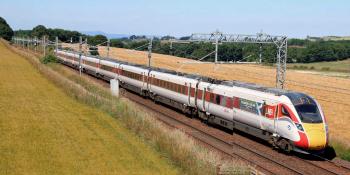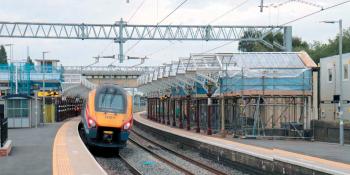Train operators continually work to improve the reliability of rail networks and minimise delays. DAMON CADMAN, global sales manager at Rowe Hankins, explains how its split-core NIC increases safety while also reducing costly disruption
To keep pace with today’s turbo-charged world, there is an increasing demand for trains that travel at higher speeds and run more frequently. Trains typically run 24 hours a day, seven days a week, 365 days a year, so there is no ideal time to carry out maintenance.
PROACTIVE MAINTENANCE
Changes in current can be a symptom of a range of faults that may threaten rail safety, critical system performance or the durability and reliability of equipment. The rail industry has moved from ‘find and fix’ to a ‘predict and prevent’ methodology that requires reliable non-intrusive measurement.
Manufactured by Rowe Hankins in the UK, the split-core nonintrusive current monitor (NIC) has been designed for use in rail condition monitoring (RCM) systems, allowing engineers to fix problems before failure. The device detects variation in current with no direct effect on the power supply.
Designed for trackside application to assist Network Rail in its preventative maintenance programme, …




